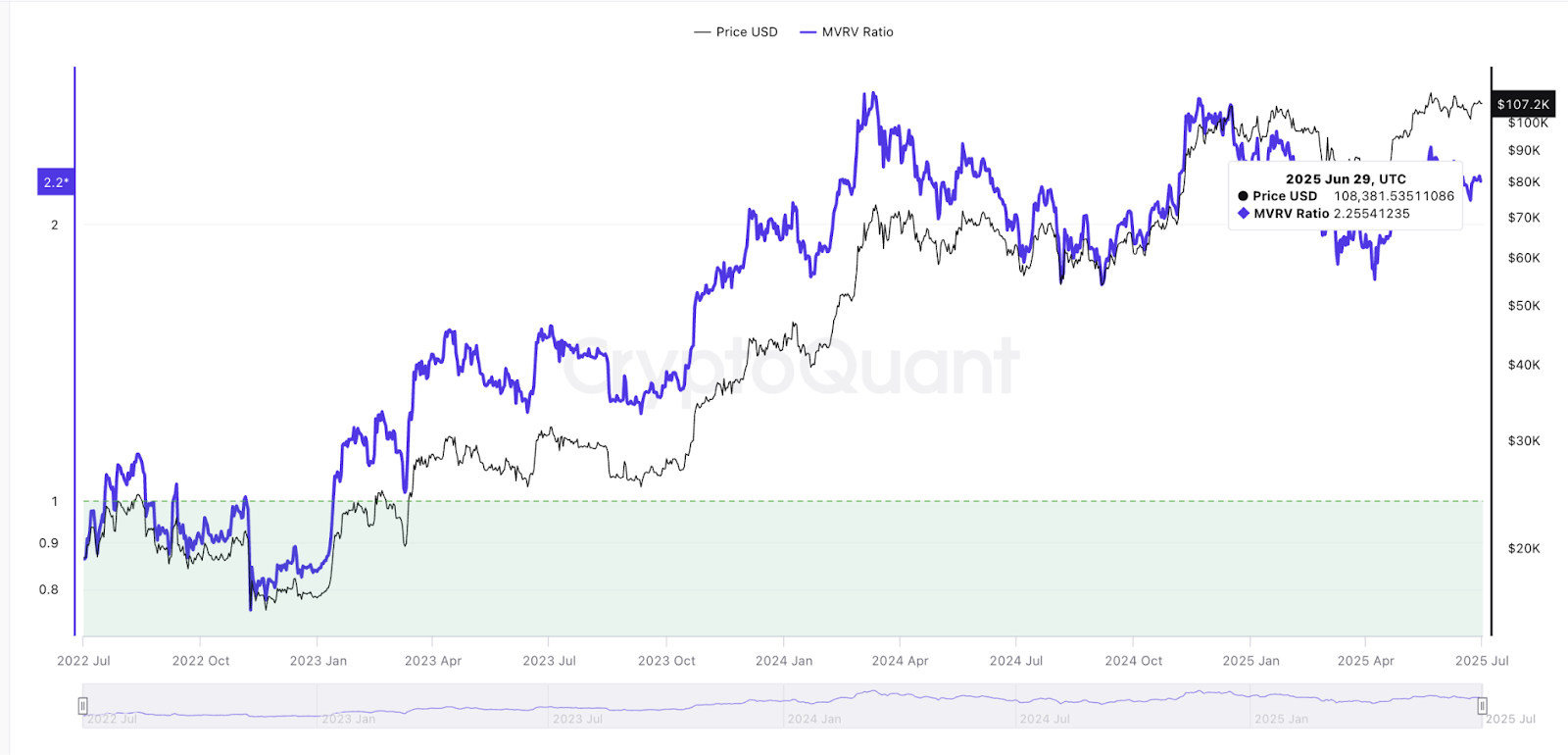
Bitcoin saw a mild selloff on the Fourth of July as on-chain data revealed rare movements from long-dormant whale wallets and a notable shift in whale accumulation trends.
The flagship cryptocurrency briefly touched $110,000 before retreating to around $107,600 by midday. The intraday decline—around 2%—comes amid unusually high on-chain activity from early Bitcoin holders and weakening whale metrics.
Whale Accumulation Trend Turns Negative
On-chain metrics from CryptoQuant reveal a deeper structural shift. The 30-day percentage change in total whale holdings has now turned negative for the first time in six months.
Whale holdings steadily increased from 3.28 million BTC in January to a peak of 3.55 million BTC in June. This accumulation phase helped support Bitcoin’s price recovery through Q1 and Q2.
However, this upward trend has now reversed. The decline in net whale holdings signals the start of a distribution phase, when large holders begin offloading or reallocating capital.

Historically, negative shifts in this metric have coincided with short- to mid-term corrections. Institutional and long-term holders often reduce exposure or prepare for liquidity events.
If more of these dormant coins start moving—or selling pressure mounts—we may see a short-term retest of support zones near $105,000.
Dormant Bitcoin Whales Wake Up After 14 Years
Seven dormant Bitcoin wallets dating back to April and May 2011 transferred a combined 70,000 BTC, valued at $7.6 billion, in the past 24 hours.
Blockchain data shows these addresses had been inactive for over 14 years. At the time of receipt, BTC traded below $4.
Today, the same holdings are worth billions.
The coordinated nature of these moves suggests they belong to a single entity—possibly an early miner or institutional custodian.
At least 12 transactions were logged today, each moving 10,000 BTC, flagged by analysts as originating from a whale cluster labeled “BTC Whale 4th July.”
These funds were sent to fresh addresses, but no exchange deposits have been confirmed yet.
Meanwhile, one transaction traced back to a consolidation of 180 block rewards—each 50 BTC—into a single output of 9,000 BTC.
These rewards were earned during Bitcoin’s first reward era, indicating the coins came from early solo mining operations.
The timing—on US Independence Day—has also drawn attention. Some analysts interpret the symbolic date as deliberate, echoing past instances where whale activity aligned with major calendar events.
While none of the transferred coins have been sold yet, the market often reacts preemptively to such movements.
